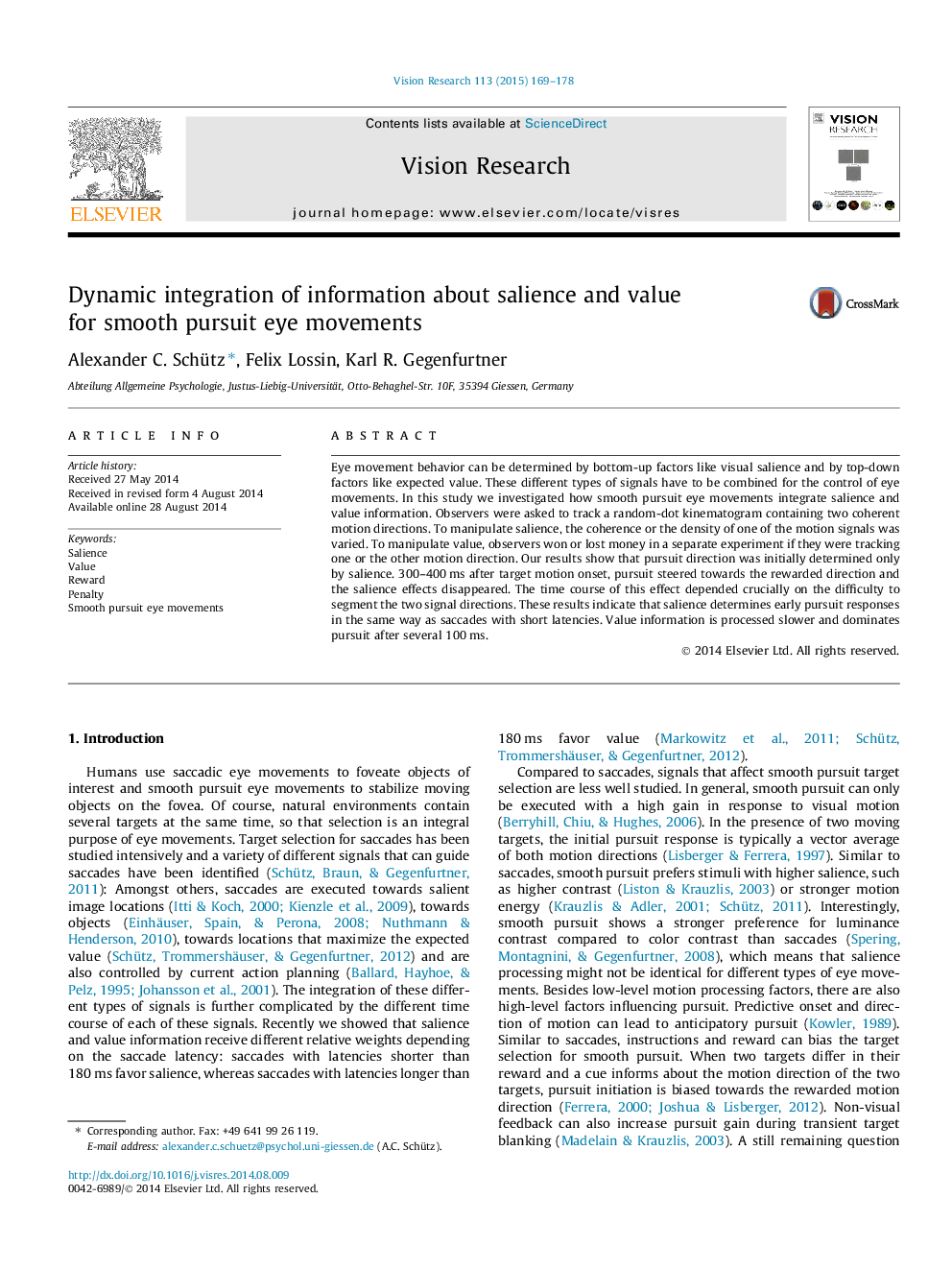| Article ID | Journal | Published Year | Pages | File Type |
|---|---|---|---|---|
| 4033635 | Vision Research | 2015 | 10 Pages |
•Weights for salience and value change dynamically in smooth pursuit eye movements.•Early smooth pursuit is determined by visual salience.•Late smooth pursuit is determined by reward and penalty.•Transition from salience to value is gradual.
Eye movement behavior can be determined by bottom-up factors like visual salience and by top-down factors like expected value. These different types of signals have to be combined for the control of eye movements. In this study we investigated how smooth pursuit eye movements integrate salience and value information. Observers were asked to track a random-dot kinematogram containing two coherent motion directions. To manipulate salience, the coherence or the density of one of the motion signals was varied. To manipulate value, observers won or lost money in a separate experiment if they were tracking one or the other motion direction. Our results show that pursuit direction was initially determined only by salience. 300–400 ms after target motion onset, pursuit steered towards the rewarded direction and the salience effects disappeared. The time course of this effect depended crucially on the difficulty to segment the two signal directions. These results indicate that salience determines early pursuit responses in the same way as saccades with short latencies. Value information is processed slower and dominates pursuit after several 100 ms.
